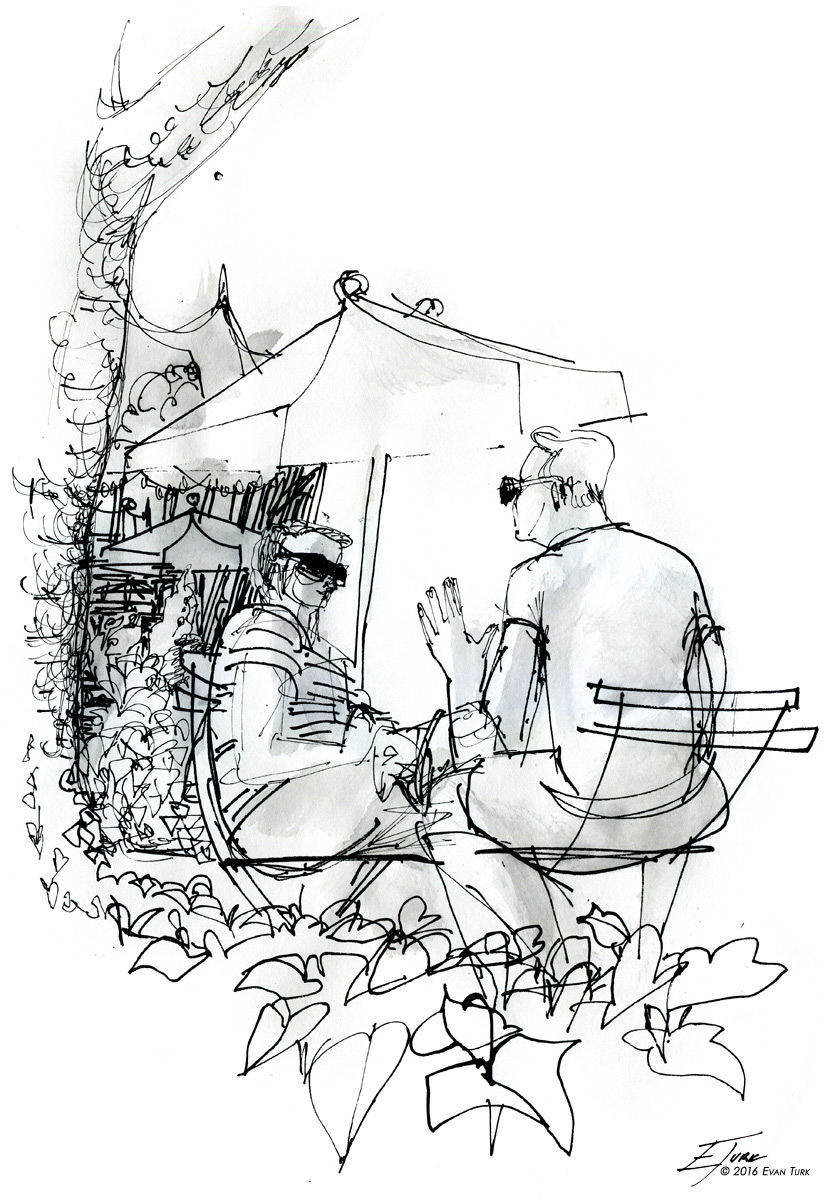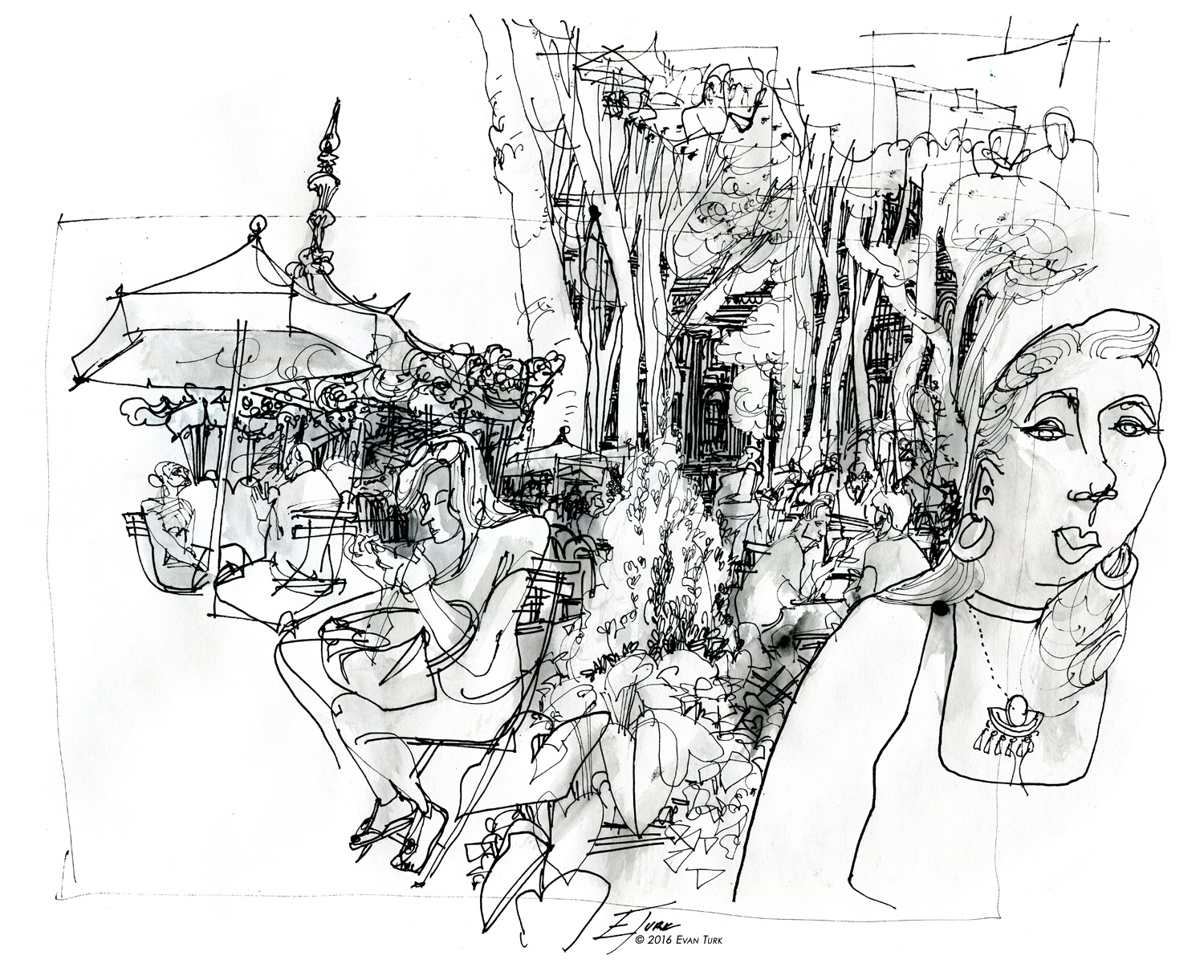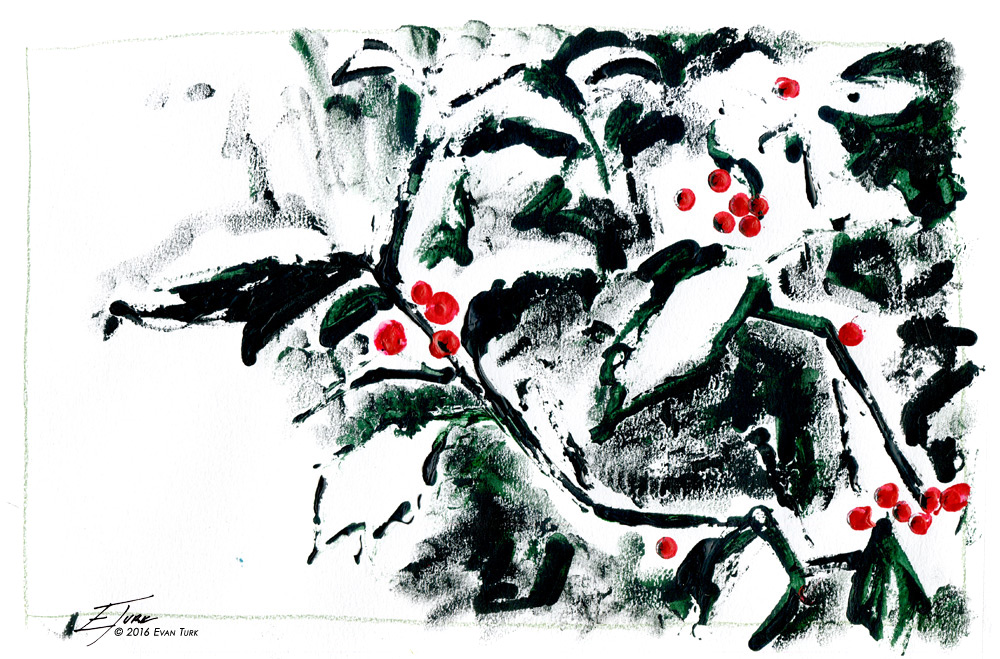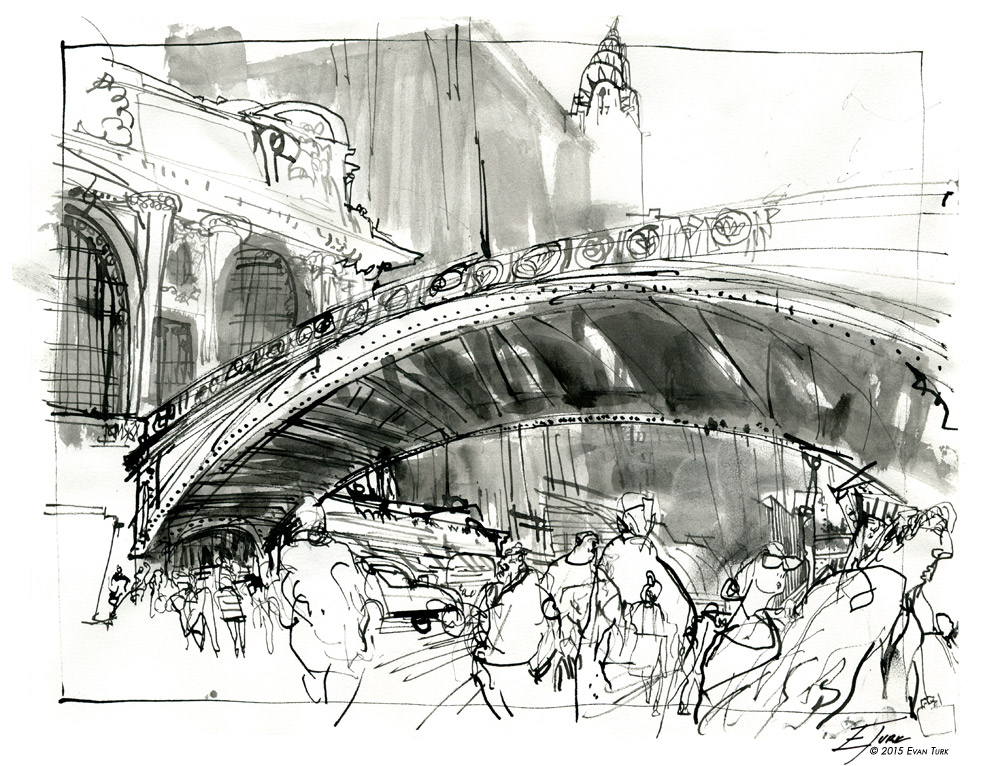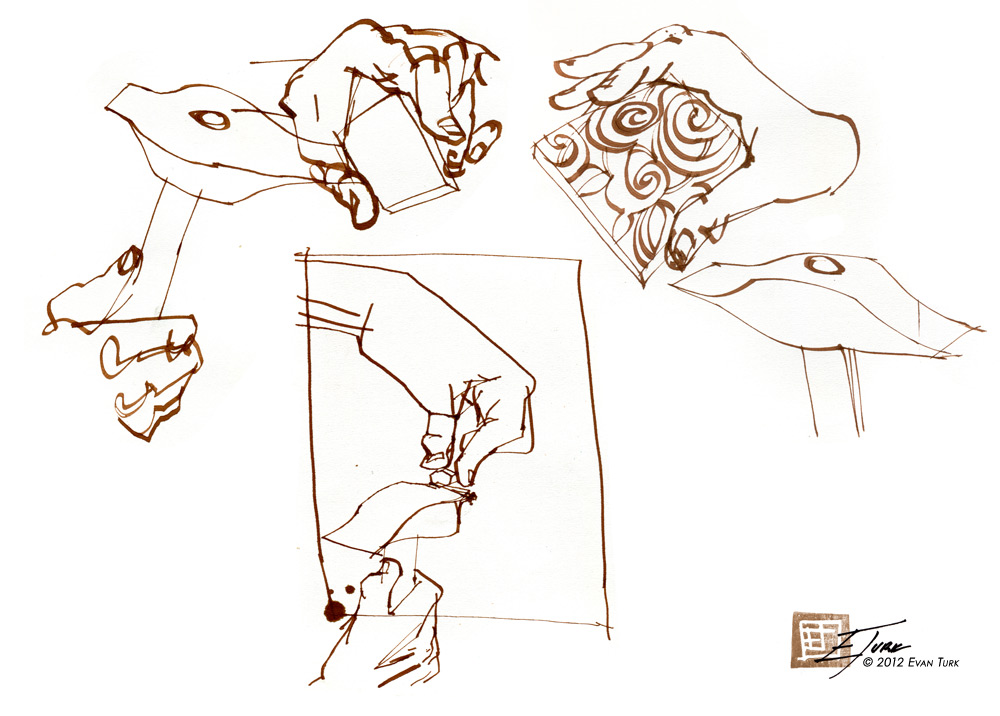It's almost 2017 and this year has been quite a crazy one! Chris and I recently moved up to the Hudson Valley, so it's been a great period of adjustment getting used to the new house. With not quite as much time to draw, and no scanner hooked up until now, I decided to condense the last few months into one big finale for 2016!
This timeline also chronicles our slow descent into winter...These first drawings are from a lovely day of drawing with Audrey Hawkins back in September.
For the next couple months, each warm day felt like the last warm day we would ever have, so everyone, including me, was out trying to take advantage of the sunshine.
The city always feels so full on these warm days.
I loved this grouping of 2 mostly naked young people sunbathing next to a nun, all enjoying the park.
It still felt like summer until the sun went behind the buildings and everyone started putting their coats on over their sleeveless shirts.
A couple weeks later, as fall had begun to set in, Audrey, Chris and I had another nice day drawing out in Central Park.
The colors were beautiful, but the day not quite as luxurious as it had already started getting dark depressingly early.
Up in Croton-on-Hudson, I decided to grab a few hours on a warm day, in between renovating, to draw the new house before it got too cold. A huge and exciting project!
In the Hudson Valley, summer was fading, but the fall leaves were just getting started.
It was so magical getting to see the leaves change and fall over the weeks, and watching how the light and colors changed.
Our friend and fellow artist Julia Sverchuk came up to visit and we went out to Fishkill Farm to enjoy a not-quite-so-warm fall day.
It was chilly, but people were still out and about, stretching their legs before the looming hibernation.
Chris and I went out for a brisk day up north drawing at Staatsburg State Historic Site, where we got married last June. The wind got a little intense on the river, so we made it a short day.
November brought the harrowing election (you can read more about my thoughts here) and less time drawing out in the cold.
And finally winter came with our first snow in the new house! The whole neighborhood looked like a Christmas card.
So now the year is almost over, and we have a strange new 2017 to anticipate. 2016 was definitely a year of change, but I am still hopeful for the new year.



